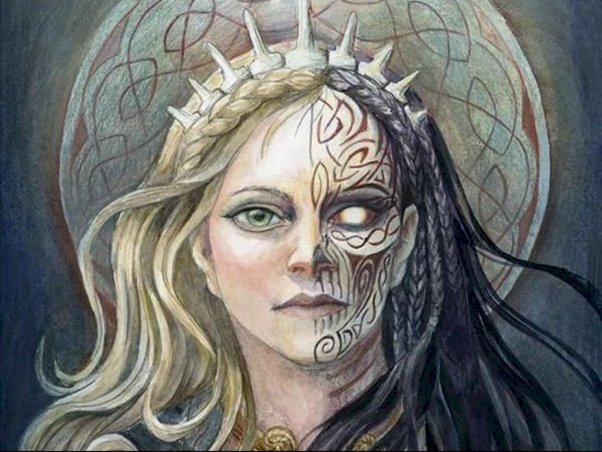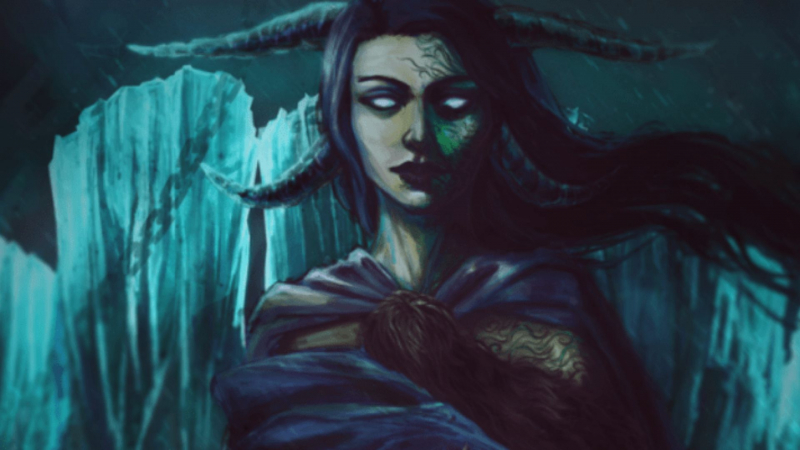Hel

In Norse mythology, Hel is a female character who is thought to rule the same-named underworld realm and receive the souls of the deceased. Both the Prose Edda and the Poetic Edda, which were both written in the 13th century and were gathered from earlier traditional sources, mention Hel. She is also mentioned in poems from the ninth and tenth century, respectively, that are included in the Heimskringla and Egils saga records. Hel may occur on several Migration Period bracteates, and a passage in the Latin work Gesta Danorum, published in the 12th century by Saxo Grammaticus, is usually thought to be a reference to Hel. Hel is also considered as one of the the most famous Norse goddesses.
Hel is referred to as the daughter of Loki in the Heimskringla, Prose Edda, and Poetic Edda. Hel is said to have been chosen by the deity Odin to be the ruler of a country with the same name that is situated in Niflheim, according to the Prose Edda book Gylfaginning. Her look is described as having a dark, dejected expression and being half blue and half flesh-colored in the same source. The Prose Edda describes Hel as the ruler of enormous palaces with numerous attendants in her subterranean realm and as playing a significant role in Baldr's attempted resurrection.
Scholarly theories about Hel's possible relationships to characters in the Old Norse Bartholomeus saga postola and the 11th-century Old English Gospel of Nicodemus have been put forth. They suggest that she may have been a goddess with possible Indo-European parallels in Bhavani, Kali, and Mahakali or that Hel may have only existed as a late personification of the place with the same name.











